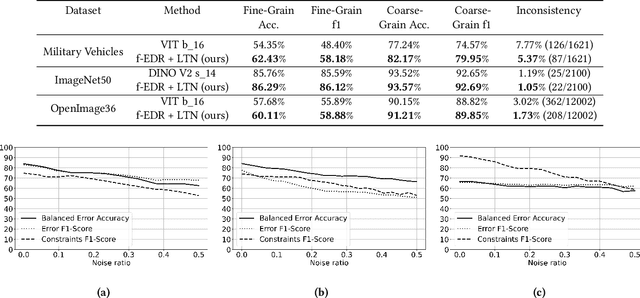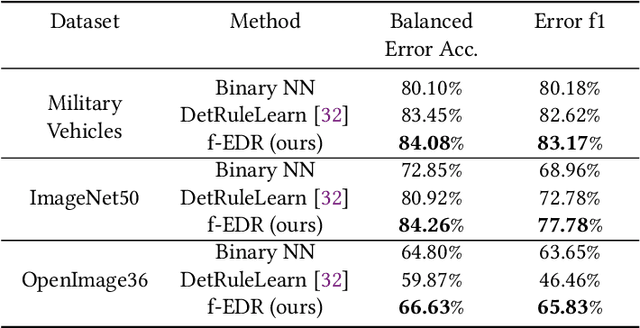Khoa Vo
Rethinking Progression of Memory State in Robotic Manipulation: An Object-Centric Perspective
Nov 18, 2025Abstract:As embodied agents operate in increasingly complex environments, the ability to perceive, track, and reason about individual object instances over time becomes essential, especially in tasks requiring sequenced interactions with visually similar objects. In these non-Markovian settings, key decision cues are often hidden in object-specific histories rather than the current scene. Without persistent memory of prior interactions (what has been interacted with, where it has been, or how it has changed) visuomotor policies may fail, repeat past actions, or overlook completed ones. To surface this challenge, we introduce LIBERO-Mem, a non-Markovian task suite for stress-testing robotic manipulation under object-level partial observability. It combines short- and long-horizon object tracking with temporally sequenced subgoals, requiring reasoning beyond the current frame. However, vision-language-action (VLA) models often struggle in such settings, with token scaling quickly becoming intractable even for tasks spanning just a few hundred frames. We propose Embodied-SlotSSM, a slot-centric VLA framework built for temporal scalability. It maintains spatio-temporally consistent slot identities and leverages them through two mechanisms: (1) slot-state-space modeling for reconstructing short-term history, and (2) a relational encoder to align the input tokens with action decoding. Together, these components enable temporally grounded, context-aware action prediction. Experiments show Embodied-SlotSSM's baseline performance on LIBERO-Mem and general tasks, offering a scalable solution for non-Markovian reasoning in object-centric robotic policies.
SlotVLA: Towards Modeling of Object-Relation Representations in Robotic Manipulation
Nov 10, 2025Abstract:Inspired by how humans reason over discrete objects and their relationships, we explore whether compact object-centric and object-relation representations can form a foundation for multitask robotic manipulation. Most existing robotic multitask models rely on dense embeddings that entangle both object and background cues, raising concerns about both efficiency and interpretability. In contrast, we study object-relation-centric representations as a pathway to more structured, efficient, and explainable visuomotor control. Our contributions are two-fold. First, we introduce LIBERO+, a fine-grained benchmark dataset designed to enable and evaluate object-relation reasoning in robotic manipulation. Unlike prior datasets, LIBERO+ provides object-centric annotations that enrich demonstrations with box- and mask-level labels as well as instance-level temporal tracking, supporting compact and interpretable visuomotor representations. Second, we propose SlotVLA, a slot-attention-based framework that captures both objects and their relations for action decoding. It uses a slot-based visual tokenizer to maintain consistent temporal object representations, a relation-centric decoder to produce task-relevant embeddings, and an LLM-driven module that translates these embeddings into executable actions. Experiments on LIBERO+ demonstrate that object-centric slot and object-relation slot representations drastically reduce the number of required visual tokens, while providing competitive generalization. Together, LIBERO+ and SlotVLA provide a compact, interpretable, and effective foundation for advancing object-relation-centric robotic manipulation.
Amodal Instance Segmentation with Diffusion Shape Prior Estimation
Sep 26, 2024Abstract:Amodal Instance Segmentation (AIS) presents an intriguing challenge, including the segmentation prediction of both visible and occluded parts of objects within images. Previous methods have often relied on shape prior information gleaned from training data to enhance amodal segmentation. However, these approaches are susceptible to overfitting and disregard object category details. Recent advancements highlight the potential of conditioned diffusion models, pretrained on extensive datasets, to generate images from latent space. Drawing inspiration from this, we propose AISDiff with a Diffusion Shape Prior Estimation (DiffSP) module. AISDiff begins with the prediction of the visible segmentation mask and object category, alongside occlusion-aware processing through the prediction of occluding masks. Subsequently, these elements are inputted into our DiffSP module to infer the shape prior of the object. DiffSP utilizes conditioned diffusion models pretrained on extensive datasets to extract rich visual features for shape prior estimation. Additionally, we introduce the Shape Prior Amodal Predictor, which utilizes attention-based feature maps from the shape prior to refine amodal segmentation. Experiments across various AIS benchmarks demonstrate the effectiveness of our AISDiff.
Error Detection and Constraint Recovery in Hierarchical Multi-Label Classification without Prior Knowledge
Jul 21, 2024


Abstract:Recent advances in Hierarchical Multi-label Classification (HMC), particularly neurosymbolic-based approaches, have demonstrated improved consistency and accuracy by enforcing constraints on a neural model during training. However, such work assumes the existence of such constraints a-priori. In this paper, we relax this strong assumption and present an approach based on Error Detection Rules (EDR) that allow for learning explainable rules about the failure modes of machine learning models. We show that these rules are not only effective in detecting when a machine learning classifier has made an error but also can be leveraged as constraints for HMC, thereby allowing the recovery of explainable constraints even if they are not provided. We show that our approach is effective in detecting machine learning errors and recovering constraints, is noise tolerant, and can function as a source of knowledge for neurosymbolic models on multiple datasets, including a newly introduced military vehicle recognition dataset.
HENASY: Learning to Assemble Scene-Entities for Egocentric Video-Language Model
Jun 01, 2024Abstract:Video-Language Models (VLMs), pre-trained on large-scale video-caption datasets, are now standard for robust visual-language representation and downstream tasks. However, their reliance on global contrastive alignment limits their ability to capture fine-grained interactions between visual and textual elements. To address these challenges, we introduce HENASY (Hierarchical ENtities ASsemblY), a novel framework designed for egocentric video analysis that enhances the granularity of video content representations. HENASY employs a compositional approach using an enhanced slot-attention and grouping mechanisms for videos, assembling dynamic entities from video patches. It integrates a local entity encoder for dynamic modeling, a global encoder for broader contextual understanding, and an entity-aware decoder for late-stage fusion, enabling effective video scene dynamics modeling and granular-level alignment between visual entities and text. By incorporating innovative contrastive losses, HENASY significantly improves entity and activity recognition, delivering superior performance on benchmarks such as Ego4D and EpicKitchen, and setting new standards in both zero-shot and extensive video understanding tasks. Our results confirm groundbreaking capabilities of HENASY and establish it as a significant advancement in video-language multimodal research.
ShapeFormer: Shape Prior Visible-to-Amodal Transformer-based Amodal Instance Segmentation
Mar 22, 2024Abstract:Amodal Instance Segmentation (AIS) presents a challenging task as it involves predicting both visible and occluded parts of objects within images. Existing AIS methods rely on a bidirectional approach, encompassing both the transition from amodal features to visible features (amodal-to-visible) and from visible features to amodal features (visible-to-amodal). Our observation shows that the utilization of amodal features through the amodal-to-visible can confuse the visible features due to the extra information of occluded/hidden segments not presented in visible display. Consequently, this compromised quality of visible features during the subsequent visible-to-amodal transition. To tackle this issue, we introduce ShapeFormer, a decoupled Transformer-based model with a visible-to-amodal transition. It facilitates the explicit relationship between output segmentations and avoids the need for amodal-to-visible transitions. ShapeFormer comprises three key modules: (i) Visible-Occluding Mask Head for predicting visible segmentation with occlusion awareness, (ii) Shape-Prior Amodal Mask Head for predicting amodal and occluded masks, and (iii) Category-Specific Shape Prior Retriever aims to provide shape prior knowledge. Comprehensive experiments and extensive ablation studies across various AIS benchmarks demonstrate the effectiveness of our ShapeFormer. The code is available at: https://github.com/UARK-AICV/ShapeFormer
ZEETAD: Adapting Pretrained Vision-Language Model for Zero-Shot End-to-End Temporal Action Detection
Nov 04, 2023



Abstract:Temporal action detection (TAD) involves the localization and classification of action instances within untrimmed videos. While standard TAD follows fully supervised learning with closed-set setting on large training data, recent zero-shot TAD methods showcase the promising open-set setting by leveraging large-scale contrastive visual-language (ViL) pretrained models. However, existing zero-shot TAD methods have limitations on how to properly construct the strong relationship between two interdependent tasks of localization and classification and adapt ViL model to video understanding. In this work, we present ZEETAD, featuring two modules: dual-localization and zero-shot proposal classification. The former is a Transformer-based module that detects action events while selectively collecting crucial semantic embeddings for later recognition. The latter one, CLIP-based module, generates semantic embeddings from text and frame inputs for each temporal unit. Additionally, we enhance discriminative capability on unseen classes by minimally updating the frozen CLIP encoder with lightweight adapters. Extensive experiments on THUMOS14 and ActivityNet-1.3 datasets demonstrate our approach's superior performance in zero-shot TAD and effective knowledge transfer from ViL models to unseen action categories.
Open-Fusion: Real-time Open-Vocabulary 3D Mapping and Queryable Scene Representation
Oct 05, 2023



Abstract:Precise 3D environmental mapping is pivotal in robotics. Existing methods often rely on predefined concepts during training or are time-intensive when generating semantic maps. This paper presents Open-Fusion, a groundbreaking approach for real-time open-vocabulary 3D mapping and queryable scene representation using RGB-D data. Open-Fusion harnesses the power of a pre-trained vision-language foundation model (VLFM) for open-set semantic comprehension and employs the Truncated Signed Distance Function (TSDF) for swift 3D scene reconstruction. By leveraging the VLFM, we extract region-based embeddings and their associated confidence maps. These are then integrated with 3D knowledge from TSDF using an enhanced Hungarian-based feature-matching mechanism. Notably, Open-Fusion delivers outstanding annotation-free 3D segmentation for open-vocabulary without necessitating additional 3D training. Benchmark tests on the ScanNet dataset against leading zero-shot methods highlight Open-Fusion's superiority. Furthermore, it seamlessly combines the strengths of region-based VLFM and TSDF, facilitating real-time 3D scene comprehension that includes object concepts and open-world semantics. We encourage the readers to view the demos on our project page: https://uark-aicv.github.io/OpenFusion
Contextual Explainable Video Representation: Human Perception-based Understanding
Dec 17, 2022Abstract:Video understanding is a growing field and a subject of intense research, which includes many interesting tasks to understanding both spatial and temporal information, e.g., action detection, action recognition, video captioning, video retrieval. One of the most challenging problems in video understanding is dealing with feature extraction, i.e. extract contextual visual representation from given untrimmed video due to the long and complicated temporal structure of unconstrained videos. Different from existing approaches, which apply a pre-trained backbone network as a black-box to extract visual representation, our approach aims to extract the most contextual information with an explainable mechanism. As we observed, humans typically perceive a video through the interactions between three main factors, i.e., the actors, the relevant objects, and the surrounding environment. Therefore, it is very crucial to design a contextual explainable video representation extraction that can capture each of such factors and model the relationships between them. In this paper, we discuss approaches, that incorporate the human perception process into modeling actors, objects, and the environment. We choose video paragraph captioning and temporal action detection to illustrate the effectiveness of human perception based-contextual representation in video understanding. Source code is publicly available at https://github.com/UARK-AICV/Video_Representation.
CLIP-TSA: CLIP-Assisted Temporal Self-Attention for Weakly-Supervised Video Anomaly Detection
Dec 09, 2022Abstract:Video anomaly detection (VAD) -- commonly formulated as a multiple-instance learning problem in a weakly-supervised manner due to its labor-intensive nature -- is a challenging problem in video surveillance where the frames of anomaly need to be localized in an untrimmed video. In this paper, we first propose to utilize the ViT-encoded visual features from CLIP, in contrast with the conventional C3D or I3D features in the domain, to efficiently extract discriminative representations in the novel technique. We then model long- and short-range temporal dependencies and nominate the snippets of interest by leveraging our proposed Temporal Self-Attention (TSA). The ablation study conducted on each component confirms its effectiveness in the problem, and the extensive experiments show that our proposed CLIP-TSA outperforms the existing state-of-the-art (SOTA) methods by a large margin on two commonly-used benchmark datasets in the VAD problem (UCF-Crime and ShanghaiTech Campus). The source code will be made publicly available upon acceptance.
 Add to Chrome
Add to Chrome Add to Firefox
Add to Firefox Add to Edge
Add to Edge